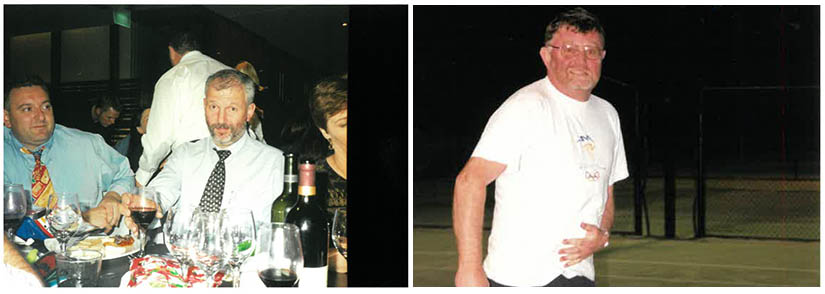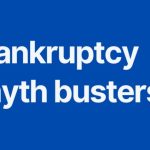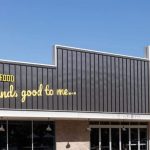Back in 1983, two accountants tired of working for the big players, decided to branch out on their own. Four decades later, one of the pair, Rod Sutherland, looks back on the Jirsch Sutherland journey.
Where it began
Celebrating 40 years is an impressive achievement in the challenging and ever-changing insolvency sector. But how did it all start? It was in 1983 when two young accountants, UK-born Rod Sutherland and New Zealander Rick Jirsch, found themselves in Sydney working for Coopers and Lybrand: Rod in insolvency and Rick in tax accounting. After deciding they wanted more autonomy than what they were getting from a large organisation, they went out on their own, forming Jirsch Sutherland in 1984.
“We were both unhappy being in a big firm,” Rod says. “Founding Jirsch Sutherland gave us an opportunity to specialise in the work we liked. I enjoyed insolvency because I found it more challenging. It wasn’t very well done in those days and the laws were inadequate. Rick was very happy to handle the tax accounting side of the partnership.”
The insolvency sector in the 1980s was largely controlled by the big firms and most of the work involved receiverships, usually initiated by a bank. “The other major work was liquidations,” says Rod. “There wasn’t much room for small firms with the secured lenders. Most of the jobs went to the larger firms who were appointed as receivers almost automatically when there was an element of distress, and their security was their indemnity from the banks. This was in contrast to creditors’ voluntary liquidations where you had no security or indemnity and were at risk no matter what you did. This meant you had to be careful not to incur any liabilities as you were personally liable for them all.”
Rod adds that while the risk was there, as long as you were careful and avoided taking on too many risks, you could succeed – but for that reason there weren’t many small firms involved in insolvency back then.
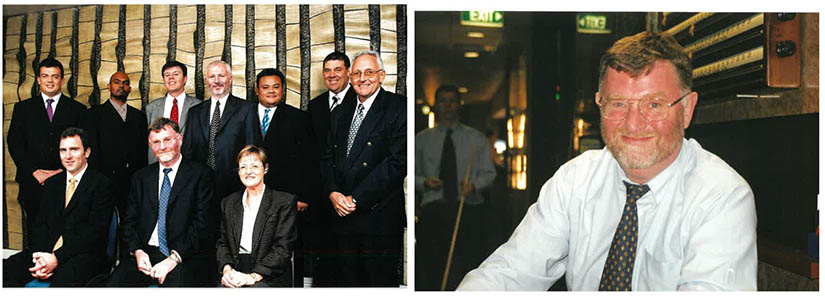
Marketing focus fuels growth
Jirsch Sutherland slowly grew, taking on several clients along with a few liquidations. “It was nothing fantastic,” Rod says. “But then the Institute of Chartered Accountants changed the laws around marketing. This had a great effect on our business, it led to a lot of growth, because I was one of the few people at the time that did marketing. I used to pick up the phone and go and talk to other accountants about our services.”
Rod says his marketing efforts helped put Jirsch Sutherland’s name “out there” and he began to receive a lot more work – mainly creditors’ voluntary liquidations. “I was wary of doing official management – which isn’t offered anymore – as while you could trade on, you were still liable for all the debt.”
The marketing focus transformed the firm and led to terrific growth, although Rod says the big firms weren’t happy about it. “Within a week of me starting to market Jirsch Sutherland, there was a complaint made about it from one of the big firms to the Institute of Chartered Accountants,” Rod says. “Here I was, a one-person firm specialising in insolvency, and they were complaining about me. I found it astonishing. But I had done nothing wrong, I was complying with the law and knew what I could and couldn’t do.”
While Rod attributes the marketing efforts to Jirsch Sutherland eventually getting to the size it did, it had a time limit. “The marketing served its purpose,” Rod says. “But after 10 years I found no one had time to see you and they all knew who you were anyway. But initially it was easy; people found it a novelty that you’d contact them so they would take your call.”
VA provides an extra boost
The other key factor in Jirsch Sutherland’s expansion was the introduction of the voluntary administration (VA) legislation. Rod says that led to a lot of growth as you could trade on with an indemnity from the Company’s assets. “We were no longer automatically liable for certain things and were able to deal with onerous obligations such as landlords, and this made a huge difference to the type of work we took on.”
When voluntary administration happened, it was “explosive”, says Rod. “One day I got four VA cases and only had four staff to cover them,” he says. “But fee size probably quadrupled so it was great for the business. Two years prior we may have got $10,000 for a terminal liquidation, but now, due to the VA being a business rescue program, we were getting $40-$50,000 for a VA and saving businesses.”
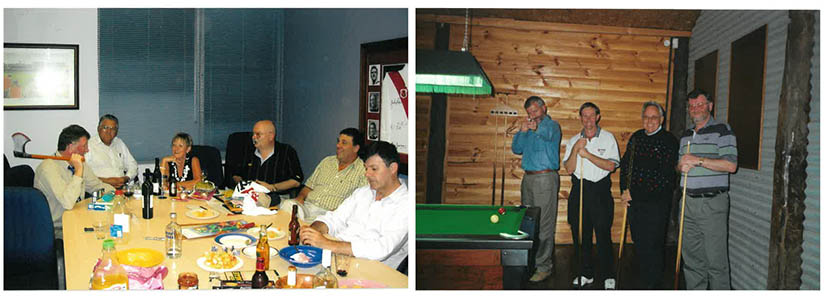
Parting ways
Rick and Rod worked on their own for about three years before taking on staff. “At this time, both sides of the practice were profitable,” Rod says. “Mine was much higher risk but we were getting tax and accounting clients as well – and we started taking on a new staff member every six months or so. This was very good growth for us, and it was very profitable.”
Eventually however, Rod found that accountants didn’t like referring insolvency work to Jirsch Sutherland because of its tax and accounting services. “They were worried we might take their accounting clients, so Rick and I decided to amicably split after about seven years,” Rod says. “There was no animosity; he just took the tax accounting clients and I kept the insolvency ones.” [Rick, like Rod has since retired.]
Over time, Jirsch Sutherland continued to expand, first opening offices in Newcastle and Parramatta [Lloyd Kerr set up the Newcastle office and more than 30 years’ later still runs it]. “At our peak we probably had 120 staff – this was a few years before Covid,” Rod says. “We focused very much on employing people who could bring in the work. Many people say they can but few deliver.”

Jirsch Sutherland National Managing Partner Bradd Morelli agrees with this sentiment and remembers the time he joined the company, back in 2008. “Rod said to me, ‘Meet the accountants, generate the work and don’t be a dickhead – the rest will work itself out’. I found this advice inspiring, although a bit nerve-wracking.”
Bradd says Rod provided him with the opportunity to develop as an insolvency practitioner, and as he tells those starting out now, “you live and die by your own sword”. “Rod’s mentoring taught people how to follow-through,” he says. “I put much of my success down to the support, opportunity and guidance he gave me.”
Setting up for longevity
Following Rick’s departure, Jirsch Sutherland was now focused on insolvency and Rod took time to ensure it was set up for ongoing success. This was important, he says, because there were often long delays in getting paid. “You always need to have a lot of work in progress to be viable,” he says. “You have to wait – sometimes years – to get paid. So the art was trying to make sure you were efficient.”
During Rod’s time at the organisation, he was involved in a number of very big cases, some bringing in over $1 million in fees. “We did Fantastic Furniture when it was put into voluntary administration,” he says. “We recapitalised it and it’s still in existence today. We did thousands of jobs. We deliberately tried to avoid potentially non-paying work, where you had to carry the risk for two or three years and not know if you were going to get paid at the end.”
Rod says the organisation would prioritise jobs that made money and if they needed to open a satellite office to do it, they did. “But you needed someone in the offices who was local and sometimes they would be tricky to handle,” he says. “We dealt with this by getting people to buy into the firm when they joined. Usually we funded it internally to get them to buy in and this was a formula that seemed to work.”
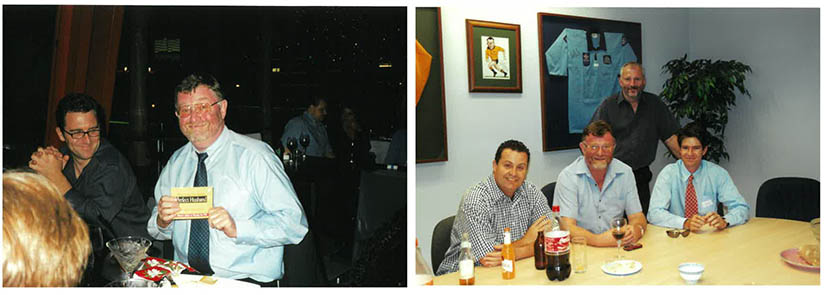
How insolvency evolved
Rod says the insolvency sector has changed a lot over the years and cites COVID as having a major impact. ”The government changed the legislation and made it very easy for people and companies not to pay their debts and to do nothing about it,” he says. “There are thousands of businesses out there that are zombie companies with no assets, and a lot of creditors – mainly the ATO.”
Another change was the introduction of voluntary administration, which really changed the playing field for smaller firms like his. “We were able to get a larger percentage of this type of work because the big firms weren’t very good at it,” he says. “So, there was a big shift of work from the big firms to the small.”
One element of the insolvency sector Rod isn’t happy with is ASIC’s enforcement regime. “I’ve sent ASIC hundreds of cases that I’ve recommended for prosecution, and they haven’t followed up on any of them,” he says. “It’s more interested in prosecuting us as liquidators and trying to penalise us for lodging forms late while letting someone who’s stolen a hundred grand go free.”
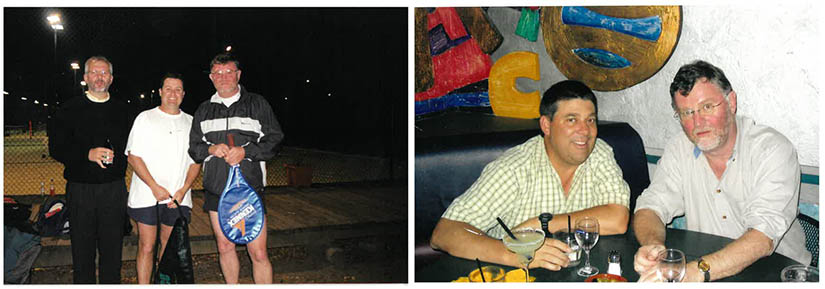
The next 40 years
Rod, who’s now 74, retired 10 years ago, and while retirement isn’t easy, he says it helped to have had a plan. His involved working one day a week less every year from the time he was 60 until he was ready to leave. “By then, all the systems were in place for me to just walk away,” he says. “I’m a believer that when your time comes to go, it’s better for the business if you then stay away. I’ve seen loads of people who carried on beyond their use-by date and it wasn’t good for them or the organisation.”
Rod is proud of what he’s built with Jirsch Sutherland and while he points out that he won’t be here for the next 40-year anniversary, he feels the organisation has the right formula in place for it to continue. “People are always trying to pinch our staff and that says a lot,” he says. “New businesses start up all the time and competition is always good. Sometimes someone else does it better than you, but we’ve been in the business for a long time, and everyone knows us so I suspect we will continue to be around for a while yet.”
According to Bradd, Rod has inspired a generation of liquidators. “Many of the industry’s practitioners have passed through Jirsch Sutherland under Rod’s guidance,” he says. “I’m no longer surprised when I find myself chatting with a liquidator and find out they used to work for Rod at some stage. I don’t believe I’ve ever heard a bad word spoken against him. Meanwhile, the current Jirsch Sutherland team is keen to continue with the success Rod has created.”
Rod reflects that insolvency is not an easy profession. “The average person runs one business at a time and finds it stressful; at Jirsch Sutherland, we often run 20-30 businesses at the same time, so we need to have really good people and really good systems – and that’s what has been built.
